 "ttyymmnn" (ttyymmnn)
"ttyymmnn" (ttyymmnn)
10/30/2018 at 12:35 • Filed to: wingspan, Planelopnik, TDIAH
 6
6
 5
5
 "ttyymmnn" (ttyymmnn)
"ttyymmnn" (ttyymmnn)
10/30/2018 at 12:35 • Filed to: wingspan, Planelopnik, TDIAH |  6 6
|  5 5 |
!!! UNKNOWN CONTENT TYPE !!!
Welcome to
This Date in Aviation History
, getting of you caught up on milestones, important historical events and people in aviation from October 27 through October 30.
!!! UNKNOWN CONTENT TYPE !!!
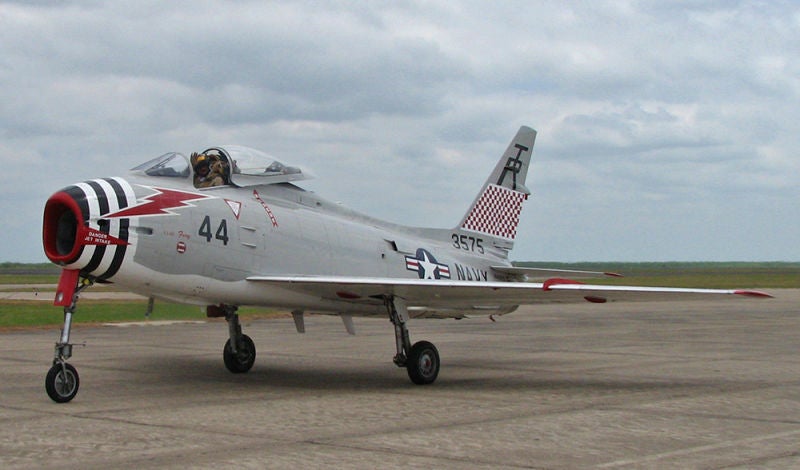
North American FJ-4 Fury, the ultimate iteration of the Fury line of fighters. Note the elongated landing gear compared to its F-86 progenitor, used to increase the Fury’s angle of attack. (Tim Shaffer)
October 28, 1954 – The first flight of the North American FJ-4 Fury. The US Army was the first branch of the US military to enter the jet age with the !!!error: Indecipherable SUB-paragraph formatting!!! in 1942, and the US Navy followed with the !!!error: Indecipherable SUB-paragraph formatting!!! in 1945, then the utterly unsuccessful !!!error: Indecipherable SUB-paragraph formatting!!! . The Pirate was followed by the much more successful !!!error: Indecipherable SUB-paragraph formatting!!! and !!!error: Indecipherable SUB-paragraph formatting!!! . However, by the early 1950s, these straight-winged fighters were being utterly outclassed in the skies over Korea by the faster and more maneuverable swept-wing Russian !!!error: Indecipherable SUB-paragraph formatting!!! . The Navy had two swept-wing fighters under development with the !!!error: Indecipherable SUB-paragraph formatting!!! and !!!error: Indecipherable SUB-paragraph formatting!!! , but those aircraft would not be ready in time. They needed a modern fighter fast, so, in a somewhat uncharacteristic move, the Navy looked to the US Air Force to quickly fill the void in their combat line up by procuring a fighter that, ironically, had originally been designed for the Navy.
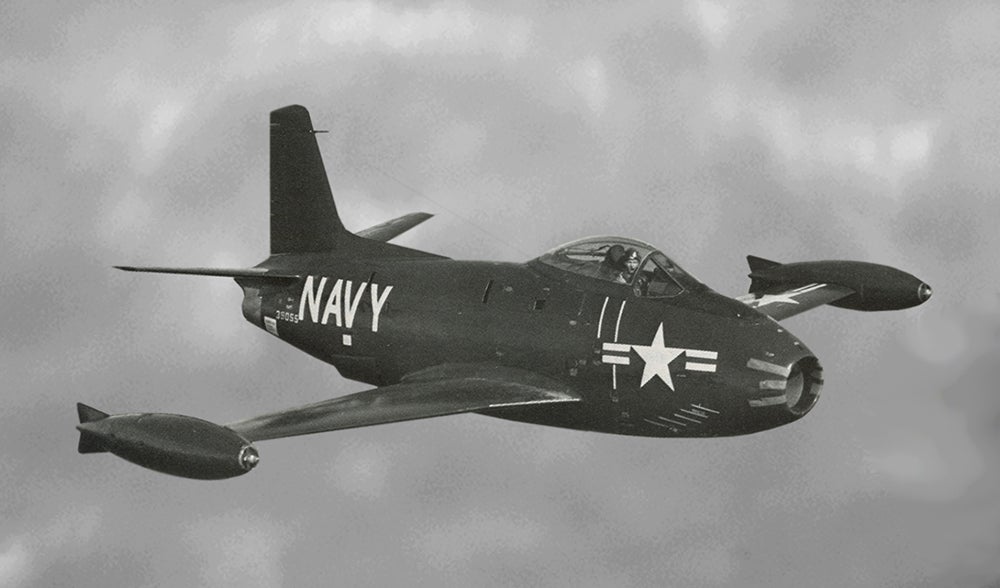
The straight-winged FJ-1 Fury, which shared the wings, tail, and cockpit of the P-51D Mustang (US Navy)
The !!!error: Indecipherable SUB-paragraph formatting!!! was an early, straight-winged fighter that had borrowed heavily from the piston-powered !!!error: Indecipherable SUB-paragraph formatting!!! . It turned out to be a disappointing fighter, and only 33 were built. But North American took the basic design of the FJ-1 Fury and developed it into the remarkable !!!error: Indecipherable SUB-paragraph formatting!!! , a swept-wing fighter that was every bit the match of the MiG-15 and ultimately one of the best fighters of the Korean War. So the Navy decided that the Sabre would be the perfect candidate to fill their fighter gap until the Cutlass and Cougar entered service. But the land-based Sabre needed significant modifications to handle the specific requirements of Naval service, including the addition of catapult gear, an arrester hook, folding wings and a lengthened nose gear to increase the angle of attack during takeoff and landing. This aircraft was designated FJ-2, and retained the Fury nickname of its FJ-1 predecessor. The Navy’s need for the new fighter was so urgent that they ordered 200 before the prototype had even flown, and the FJ-2 was soon upgraded to the FJ-3 with the addition of a more powerful engine. The Fury served the Navy well and over 700 were produced. But the modifications weren’t complete yet, and the FJ-4 became the ultimate development of the Fury line.
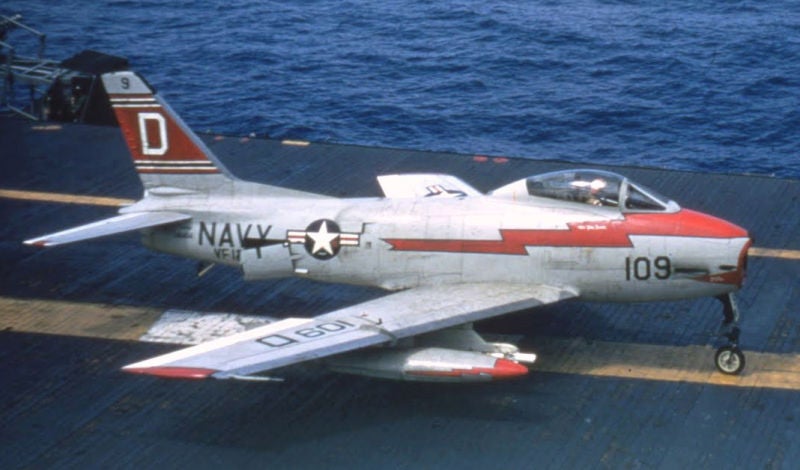
A Sabre in Navy clothing: a North American FJ-3 Fury on the flight deck. (US Navy)
Where the FJ-2 and -3 looked every bit like a Sabre in US Navy livery, the FJ-4 bore a certain family resemblance but was an entirely new structural design. The wings were made thinner, and the overall wing area was increased to hold more fuel. The landing gear was also redesigned and given a wider track, and the fuselage was deepened and stretched to accommodate more fuel. The cockpit was also enlarged. To save weight, North American removed armor plating and decreased the ammunition load, which resulted in a 50% increase in range over the FJ-3.
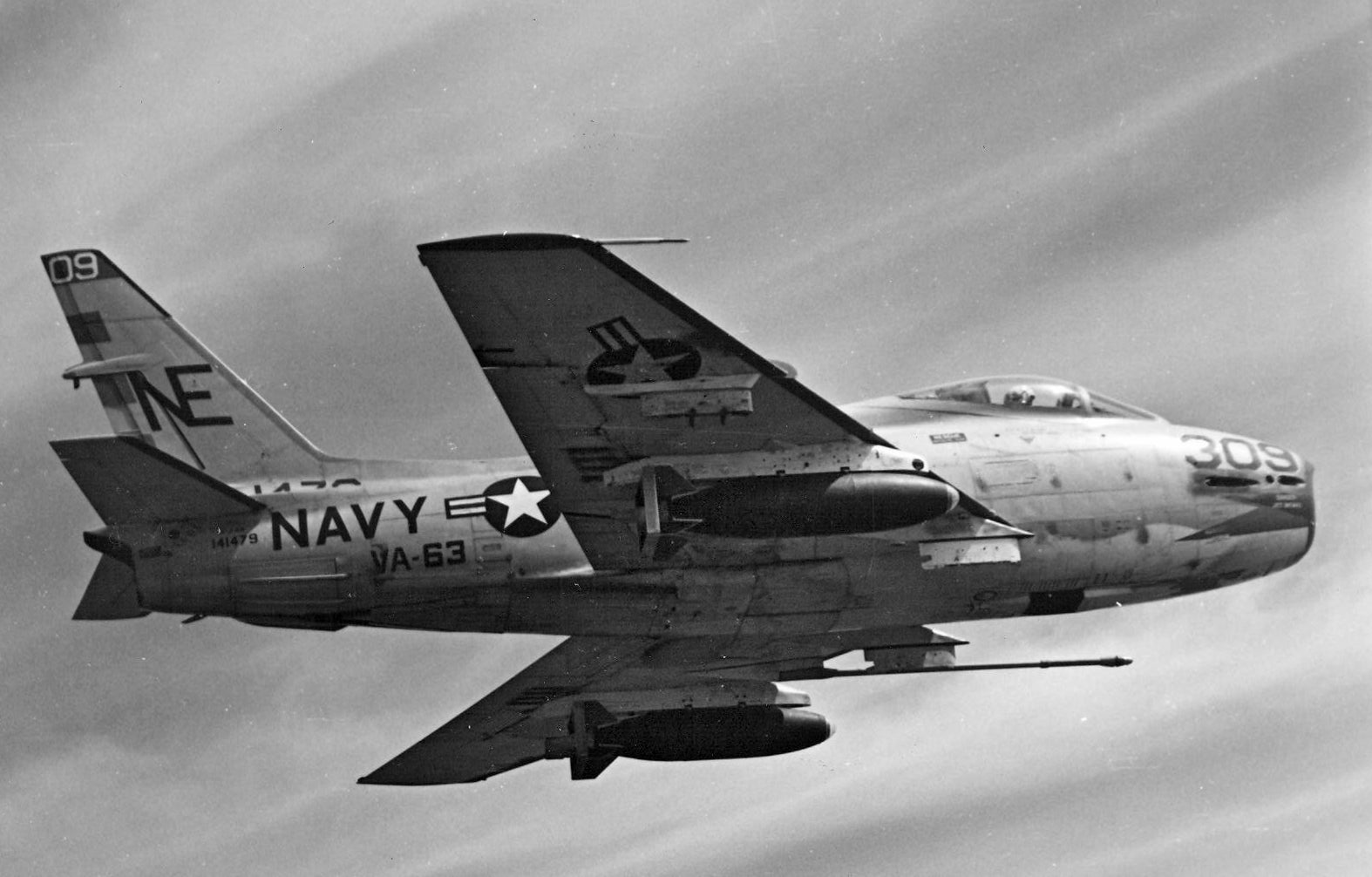 !!!CAPTION ERROR: MAY BE MULTI-LINE OR CONTAIN LINK!!!
!!!CAPTION ERROR: MAY BE MULTI-LINE OR CONTAIN LINK!!!
The Navy originally ordered 221 FJ-4s, with 71 of those aircraft converted to the FJ-4B fighter-bomber version. These had provisions to carry more external stores, including a single nuclear weapon. An additional order in 1956 brought the total number produced to 374. The FJ-4 entered service in 1955 and, with the exception of one Navy training squadron, the FJ-4 was flown exclusively by the US Marine Corps while the Navy trained on and operated the FJ-4B. In 1962, when the US military !!!error: Indecipherable SUB-paragraph formatting!!! the naming of aircraft, the FJ-4 became the F-1E, and the FJ-4B became the AF-1E. The Fury was eventually phased out in the 1960s, ending its service with units of the US Naval Reserve.
!!! UNKNOWN CONTENT TYPE !!!
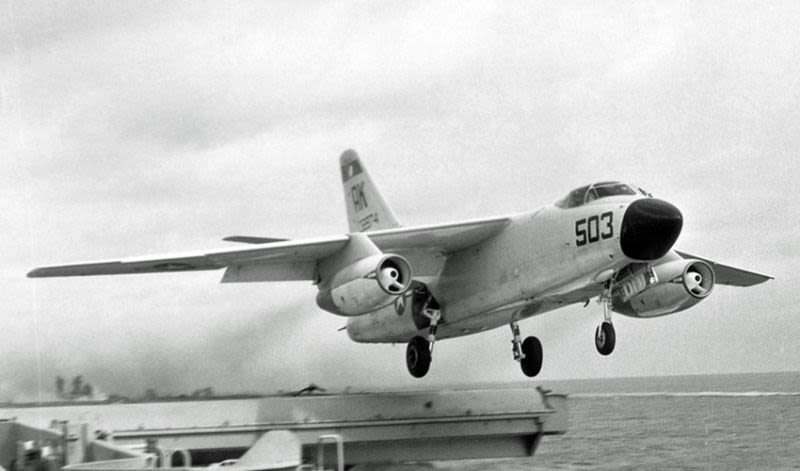
A Douglas A3D-2 Skywarrior launches from the catapult of a US Navy carrier. (US Navy)
October 28, 1952 – The first flight of the Douglas A3D (A-3) Skywarrior. Beginning in WWII, heavy strategic bombing was the purview of the US Army Air Forces, and then the US Air Force following the war. The US Navy had historically focused on fighters and dive bombers but, by the 1950s, the seaborne branch wanted to get into the strategic bombing business like their Air Force brethren. The Navy’s first foray into a large, carrier-based bomber was the !!!error: Indecipherable SUB-paragraph formatting!!! , a hybrid bomber that was powered by two radial engines and one turbojet, and was originally intended to carry a single nuclear bomb. But it soon became apparent that the Navy needed a jet-powered bomber to take over the role from the Savage, and they found a successor in the Douglas A-3 Skywarrior. Together, the two aircraft are the only strategic bombers ever operated in large numbers by the the US Navy.
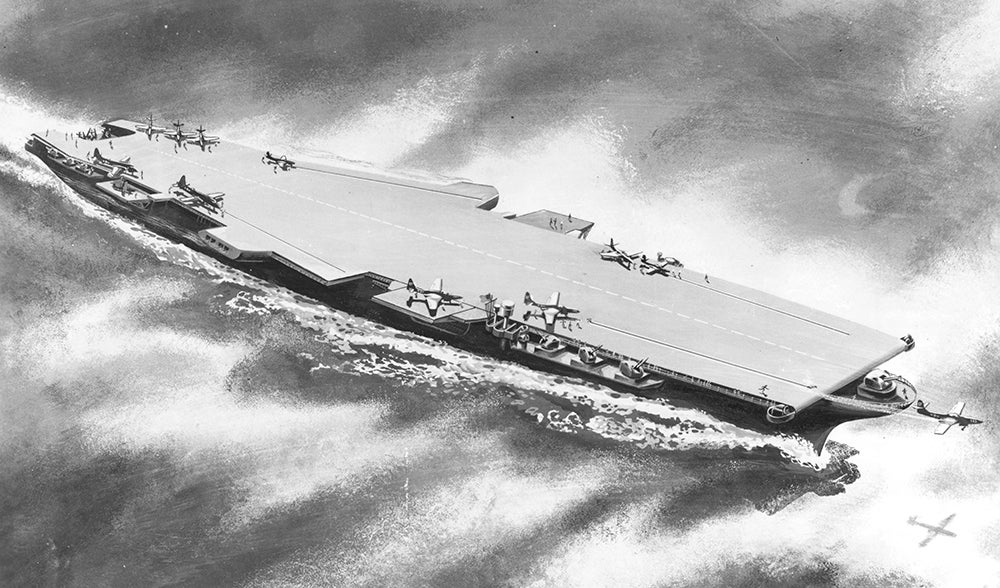 !!!CAPTION ERROR: MAY BE MULTI-LINE OR CONTAIN LINK!!!
!!!CAPTION ERROR: MAY BE MULTI-LINE OR CONTAIN LINK!!!
The story of the Skywarrior began in 1948, when the Navy sought proposals for a large, jet-powered strategic bomber that would operate from the proposed !!!error: Indecipherable SUB-paragraph formatting!!! -class super carriers then under development. The new carriers would be roughly the same size as today’s !!!error: Indecipherable SUB-paragraph formatting!!! -class carriers, but without flight deck island so they could accommodate large, heavy aircraft. Specifically, the Navy required a bomber that was capable of carrying 10,000 pounds of weapons or a single nuclear bomb and have a loaded weight of 100,000 lbs. Famed Douglas engineer !!!error: Indecipherable SUB-paragraph formatting!!! , however, proposed an aircraft with a loaded weight of just 68,000 pounds, making it the smallest proposal submitted to the Navy. But more importantly, Heinemann’s bomber was capable of operating from existing carriers, and his smaller design was perfectly positioned when the super carrier project was canceled in 1949.
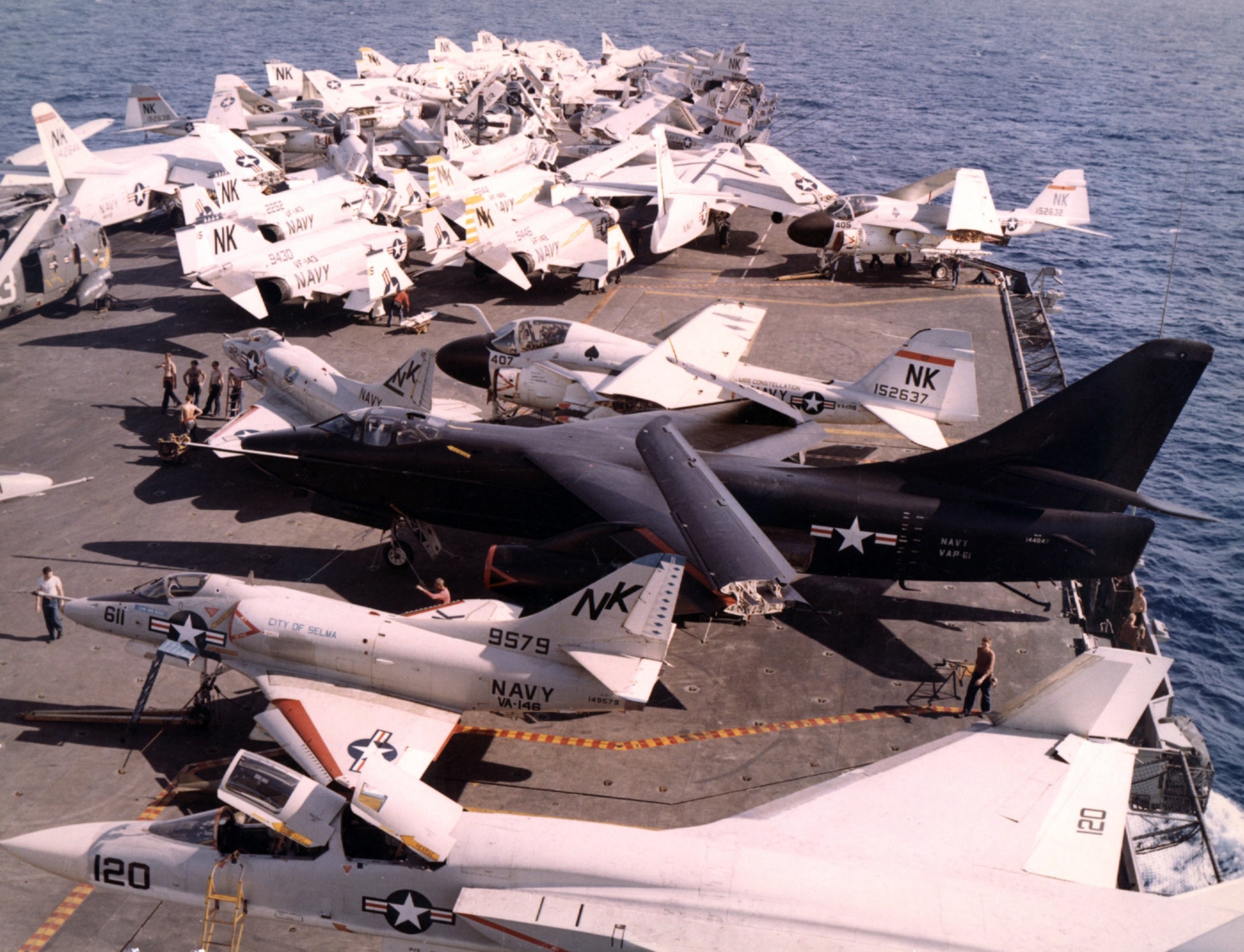 !!!CAPTION ERROR: MAY BE MULTI-LINE OR CONTAIN LINK!!!
!!!CAPTION ERROR: MAY BE MULTI-LINE OR CONTAIN LINK!!!
But even though the Skywarrior was the smallest of the naval strategic bomber proposals, it was still the heaviest aircraft ever to operate regularly from US carriers. And, with a wingspan of 72.5 feet and a length of just over 74 feet, it was also the largest. The Skywarrior was powered by two !!!error: Indecipherable SUB-paragraph formatting!!! turbojets mounted on pods under the wings and had a top speed of 610 mph. In an effort to save weight, the crew of three was not supplied with ejection seats, though they were included in the !!!error: Indecipherable SUB-paragraph formatting!!! variant produced for the Air Force. With no easy way to bail out of the big bomber, Navy pilots joked that “A3D” meant “all three dead.”
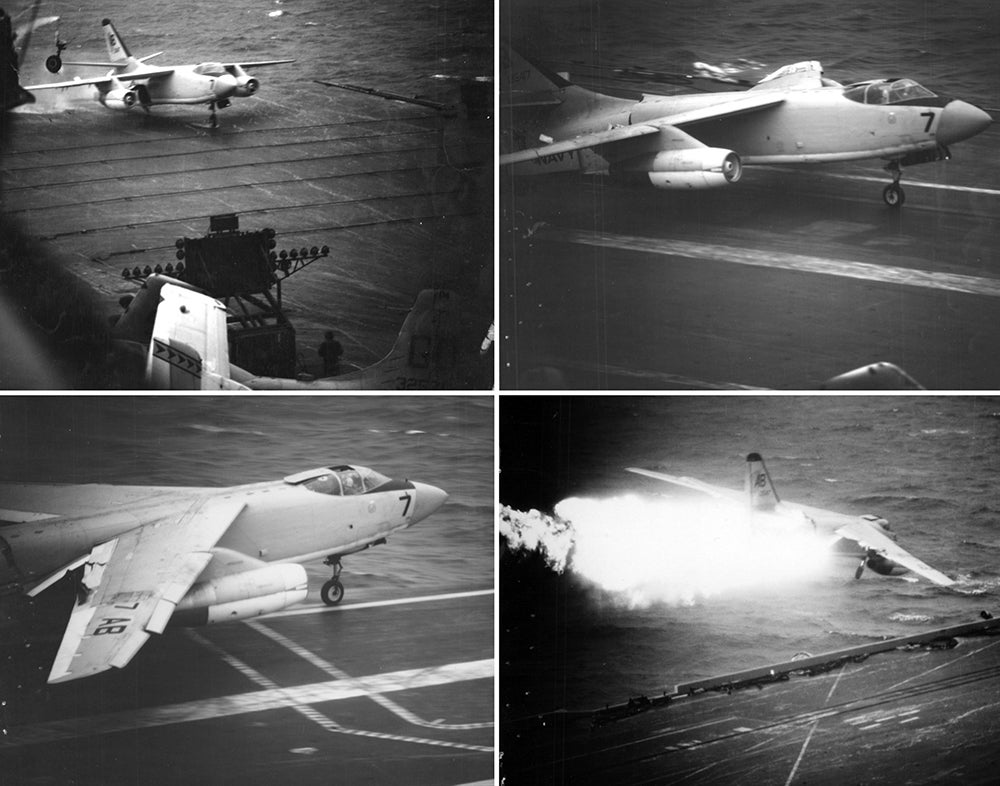 !!!CAPTION ERROR: MAY BE MULTI-LINE OR CONTAIN LINK!!!
!!!CAPTION ERROR: MAY BE MULTI-LINE OR CONTAIN LINK!!!
The Skywarrior was introduced in 1956 but, once the Navy’s !!!error: Indecipherable SUB-paragraph formatting!!! submarines became operational in 1961, the Navy no longer had a need for a nuclear-armed deep strike aircraft. But the size of the Skywarrior made it ideal for other missions. Its large internal bomb bay could carry 12,000 pounds of conventional ordnance, could be filled with electronic spying equipment, or loaded with fuel to serve as an aerial tanker. Douglas developed a reconnaissance version designated RA-3B and an electronic countermeasures variant known as the EA-3B, and both saw extensive service during the Vietnam War.
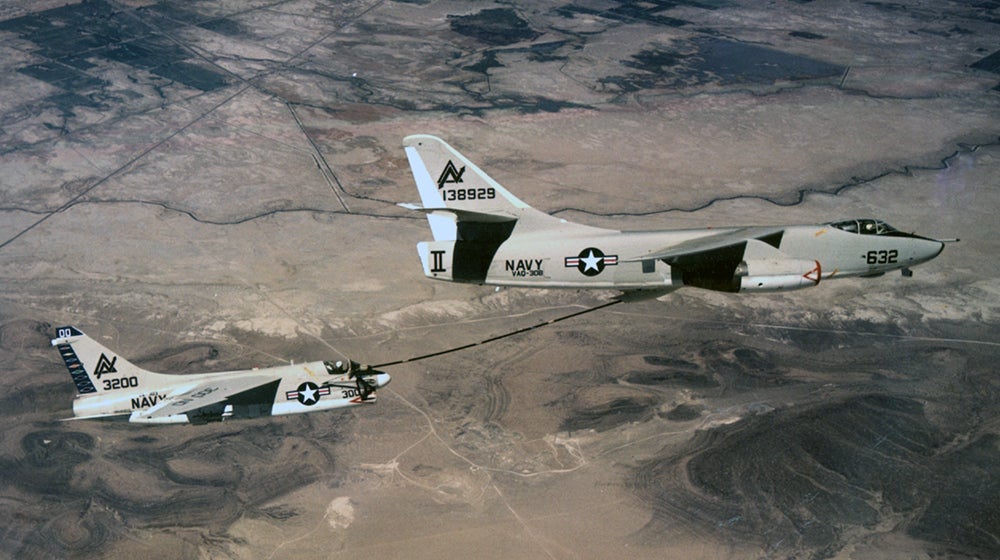 !!!CAPTION ERROR: MAY BE MULTI-LINE OR CONTAIN LINK!!!
!!!CAPTION ERROR: MAY BE MULTI-LINE OR CONTAIN LINK!!!
The aerial refueling version was designated KA-3B, and a multi-mission version known as the EKA-3B could perform the dual role of electronic warfare and aerial refueling. And, though the Navy’s strategic bombing role didn’t last that long, the amazing flexibility of the Skywarrior allowed it to become one of the longest-serving aircraft in US Navy history. Particularly, the EA-3B had such a long service life that some even participated in the !!!error: Indecipherable SUB-paragraph formatting!!! of 1990-1991, but most of the 282 Skywarriors produced were retired from active service by the end of that year.
!!! UNKNOWN CONTENT TYPE !!!
Short Takeoff
!!! UNKNOWN CONTENT TYPE !!!
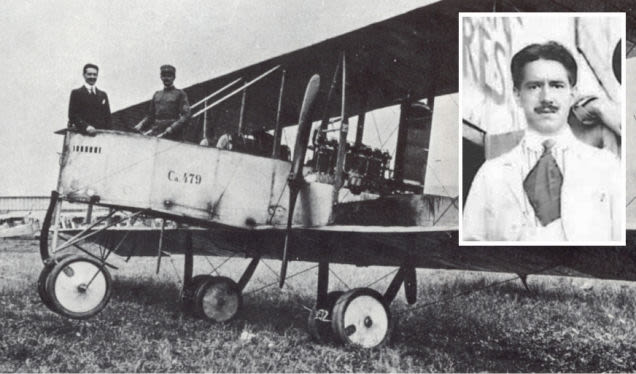
(Author unknown)
October 27, 1957 – The death of Giovanni Caproni. An Italian aeronautical, civil, and electrical engineer, Caproni was born in a part of Austria-Hungary that was annexed by Italy in 1919. After a start building aircraft engines, Caproni founded his own aircraft factory in 1908 and designed his first aircraft, the !!!error: Indecipherable SUB-paragraph formatting!!! , in 1910. A proponent of passenger airplanes, Caproni developed Italy’s first multi-engined aircraft, the !!!error: Indecipherable SUB-paragraph formatting!!! , though his first airliner, the !!!error: Indecipherable SUB-paragraph formatting!!! , crashed, killing all onboard. Between the World Wars, he designed the !!!error: Indecipherable SUB-paragraph formatting!!! , an experimental ducted fan aircraft that presaged the turbofan engine, and his company manufactured bombers and transport aircraft for Italy during WWII.
!!! UNKNOWN CONTENT TYPE !!!
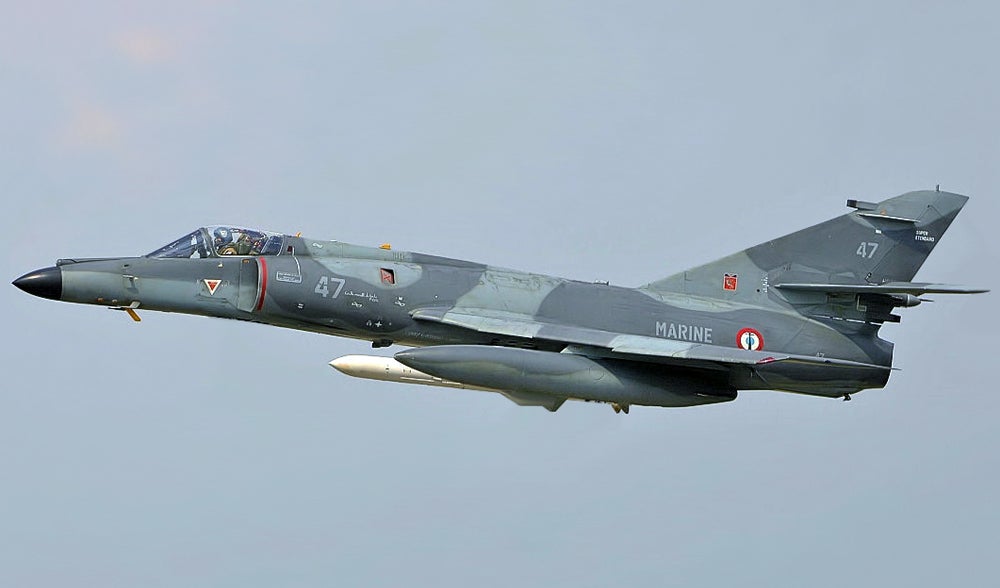 !!!CAPTION ERROR: MAY BE MULTI-LINE OR CONTAIN LINK!!!
!!!CAPTION ERROR: MAY BE MULTI-LINE OR CONTAIN LINK!!!
October 28, 1974 – The first flight of the Dassault-Breguet Super Étendard, a carrier-borne strike fighter that began as an upgraded version of the !!!error: Indecipherable SUB-paragraph formatting!!! which first flew in 1958. The Super Étendard was essentially the same size as its predecessor, but had a more powerful engine, a more efficient wing, increased range, and the ability to carry nuclear weapons. The Super Étendard entered service with the French Navy in 1978, and first saw action over Lebanon, aircraft of the French Navy attacked Syrian positions after artillery rounds were fired at French peace keepers. The Super Étendard was exported to Iraq, who used them to attack shipping during the !!!error: Indecipherable SUB-paragraph formatting!!! , as well as Argentina, who used Super Étendards armed with French-made !!!error: Indecipherable SUB-paragraph formatting!!! missiles to sink !!!error: Indecipherable SUB-paragraph formatting!!! during the !!!error: Indecipherable SUB-paragraph formatting!!! . The French Navy retired all of their Super Étendards in 2016 and replaced them with the !!!error: Indecipherable SUB-paragraph formatting!!! .
!!! UNKNOWN CONTENT TYPE !!!
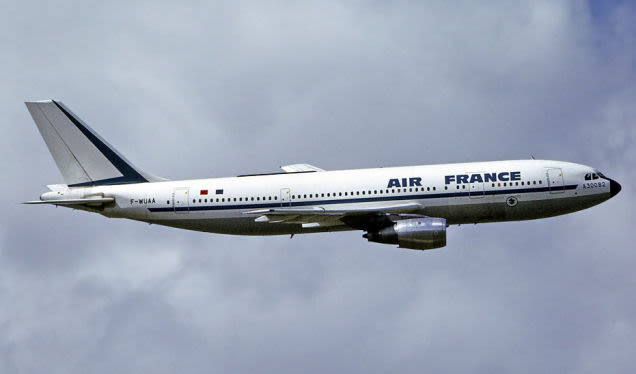 !!!CAPTION ERROR: MAY BE MULTI-LINE OR CONTAIN LINK!!!
!!!CAPTION ERROR: MAY BE MULTI-LINE OR CONTAIN LINK!!!
October 28, 1972 – The first flight of the Airbus A300, the world’s first twin-engine widebody airliner. Development of the A300 started as a collaboration between Britain, France and West Germany which led to the formation of !!!error: Indecipherable SUB-paragraph formatting!!! in 1970. The first A300 was powered by two !!!error: Indecipherable SUB-paragraph formatting!!! high-bypass turbofans and, after entering service with !!!error: Indecipherable SUB-paragraph formatting!!! , the A300 became the first twin-engine airliner to be approved for extended operations over water ( !!!error: Indecipherable SUB-paragraph formatting!!! ), a certification that had previously only been given to aircraft with more than two engines. Production of the A300 ceased in 2006 after 561 airliners were built, and the aircraft remains popular with freight carriers such as UPS and FedEx.
!!! UNKNOWN CONTENT TYPE !!!
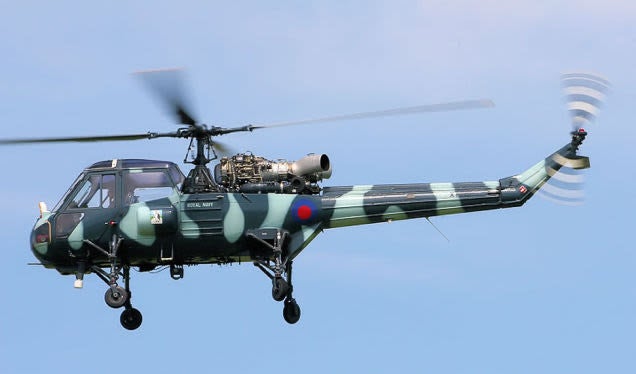 !!!CAPTION ERROR: MAY BE MULTI-LINE OR CONTAIN LINK!!!
!!!CAPTION ERROR: MAY BE MULTI-LINE OR CONTAIN LINK!!!
October 28, 1962 – The first flight of the Westland Wasp, a turbine-powered helicopter designed to perform the anti-submarine warfare role (ASW) while operating from the deck of smaller Royal Navy frigates. Along with the land-based !!!error: Indecipherable SUB-paragraph formatting!!! , the Wasp was developed from the earlier !!!error: Indecipherable SUB-paragraph formatting!!! and was given a four-wheel castering undercarriage for stability on pitching decks. The Wasp’s rotor blades could also be set at negative pitch to hold the Wasp on a rolling deck until it could be lashed down. The Wasp entered service in 1963, and could carry two torpedoes, two depth charges or a single !!!error: Indecipherable SUB-paragraph formatting!!! . A total of 133 were produced, and the type was retired by the Royal Navy in 1988.
!!! UNKNOWN CONTENT TYPE !!!
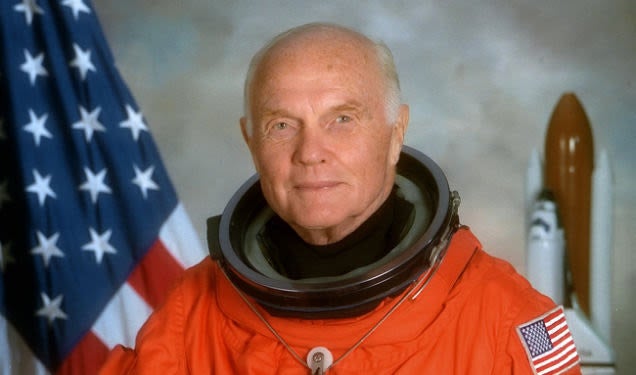
(NASA)
October 29, 1998 – Astronaut John Glenn returns to space. Seventy-seven years old and a US Senator at the time, this was Glenn’s second trip to space, having previously piloted !!!error: Indecipherable SUB-paragraph formatting!!! on February 20, 1962 as part of !!!error: Indecipherable SUB-paragraph formatting!!! , becoming the fifth person and the first American to orbit the Earth (the two previous Mercury missions had been sub-orbital). With his flight on the !!!error: Indecipherable SUB-paragraph formatting!!! as part of !!!error: Indecipherable SUB-paragraph formatting!!! , Glenn became the oldest person to fly in space, but his flight was controversial, with some seeing it as no more than a political favor. However, Glenn did perform useful scientific research into geriatric studies during his nine days in orbit.
!!! UNKNOWN CONTENT TYPE !!!
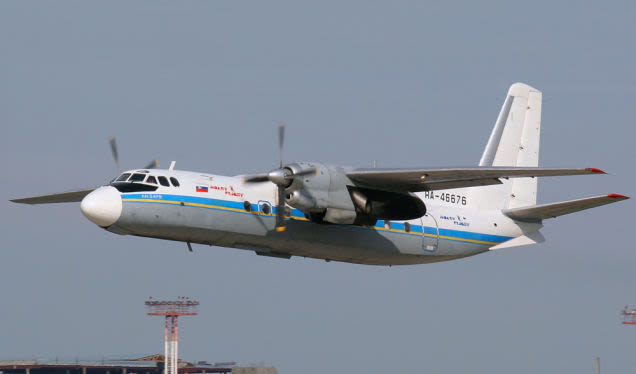 !!!CAPTION ERROR: MAY BE MULTI-LINE OR CONTAIN LINK!!!
!!!CAPTION ERROR: MAY BE MULTI-LINE OR CONTAIN LINK!!!
October 29, 1959 – The first flight of the Antonov An-24, a twin turboprop airliner that was designed to replace the aging !!!error: Indecipherable SUB-paragraph formatting!!! on short- to medium-range flights inside the Soviet Union. Like many other Russian aircraft, the An-24 was designed to operate from rough or unimproved airstrips, and nearly 1,400 were produced between 1959-1979, with some of that number built under license in China. Both the civilian and military versions of the An-24 were operated by a host of nations, and many remain in service today.
!!! UNKNOWN CONTENT TYPE !!!
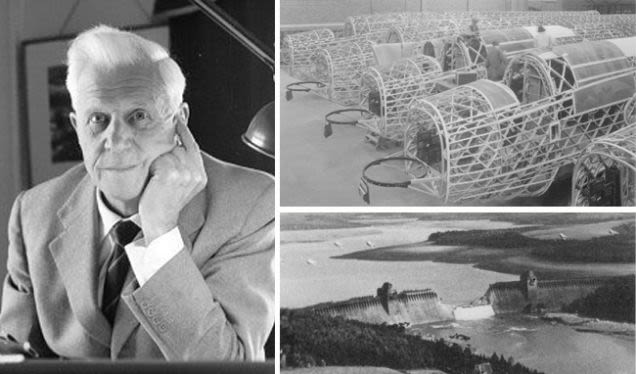
October 30, 1979 – The death of Sir Barnes Wallis. Born on September 26, 1887, Wallis was an English scientist, engineer and inventor perhaps best known for his contributions to the British war effort in WWII. Wallis pioneered the use of !!!error: Indecipherable SUB-paragraph formatting!!! to strengthen British bombers such as the !!!error: Indecipherable SUB-paragraph formatting!!! , and designed the famous bouncing bombs that were used in !!!error: Indecipherable SUB-paragraph formatting!!! to destroy dams in the Ruhr Valley in an attempt to cripple German military production and disrupt hydroelectric power generation. Wallis also developed the 6-ton !!!error: Indecipherable SUB-paragraph formatting!!! and 10-ton !!!error: Indecipherable SUB-paragraph formatting!!! blockbuster bombs that were used against German U-boat pens and other hardened structures. Following the war, Wallis dedicated himself to research into supersonic flight and the use of variable geometry wings, research which was later put to use in the !!!error: Indecipherable SUB-paragraph formatting!!! .
!!! UNKNOWN CONTENT TYPE !!!
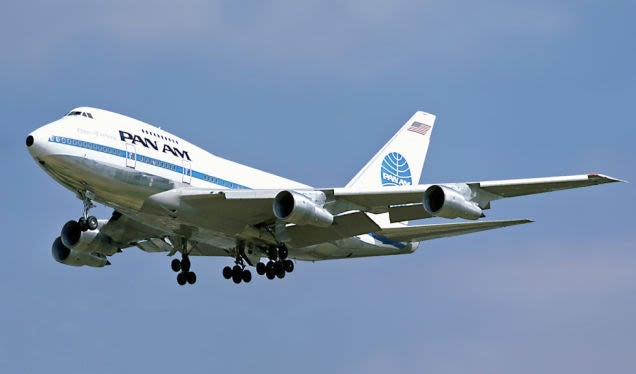 !!!CAPTION ERROR: MAY BE MULTI-LINE OR CONTAIN LINK!!!
!!!CAPTION ERROR: MAY BE MULTI-LINE OR CONTAIN LINK!!!
October 28-30, 1977 – Pan Am Flight 50 sets a world speed record for circumnavigation over both poles.
To celebrate its 50th anniversary,
!!!error: Indecipherable SUB-paragraph formatting!!!
scheduled a circumnavigation of the globe that took off from San Francisco on October 28. Flight 50 flew across the North Pole to London, then on to Cape Town, South Africa, over the South Pole to Auckland, New Zealand, then back to San Francisco, hoping to break the previous record set in 1965 by a
!!!error: Indecipherable SUB-paragraph formatting!!!
nicknamed
Pole Cat
(N322F). One hundred twenty passengers paid for the trip on board the
Clipper New Horizons
(N533PA), a
!!!error: Indecipherable SUB-paragraph formatting!!!
(Special Performance) variant shortened to increase range and speed. The flight totaled 54 hours, 7 minutes, 12 seconds of flying time, breaking
Pole Cat’s
record by more than eight hours and setting six new world records.
!!! UNKNOWN CONTENT TYPE !!!
Connecting Flights
!!! UNKNOWN CONTENT TYPE !!!
!!! UNKNOWN CONTENT TYPE !!!
!!! UNKNOWN CONTENT TYPE !!!
!!! UNKNOWN CONTENT TYPE !!!
!!! UNKNOWN CONTENT TYPE !!!
If you enjoy these Aviation History posts, please let me know in the comments. And if you missed any of the past articles, you can find them all at
!!!error: Indecipherable SUB-paragraph formatting!!!
. You can also find more stories about aviation, aviators and airplane oddities at
!!!error: Indecipherable SUB-paragraph formatting!!!
.
!!! UNKNOWN CONTENT TYPE !!!
 user314
> ttyymmnn
user314
> ttyymmnn
10/30/2018 at 14:06 |
|
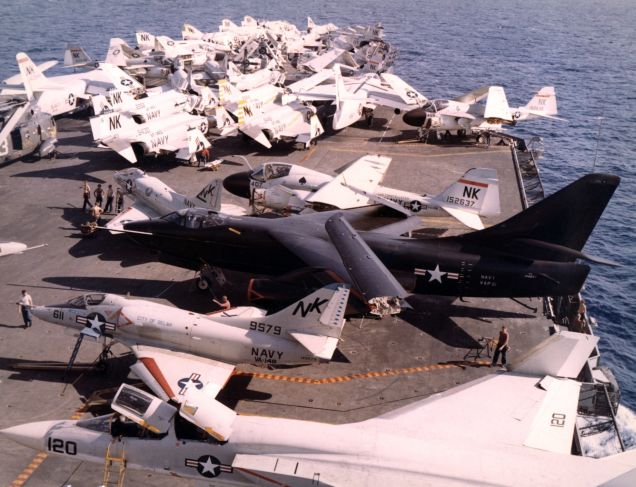
Interesting. There’s at least six different types of aircraft (RA-5, A-4, A-3, F-4, A-1, A-6) in this pic, plus one chopper.
To contrast, here’s the USS Harry S Truman :
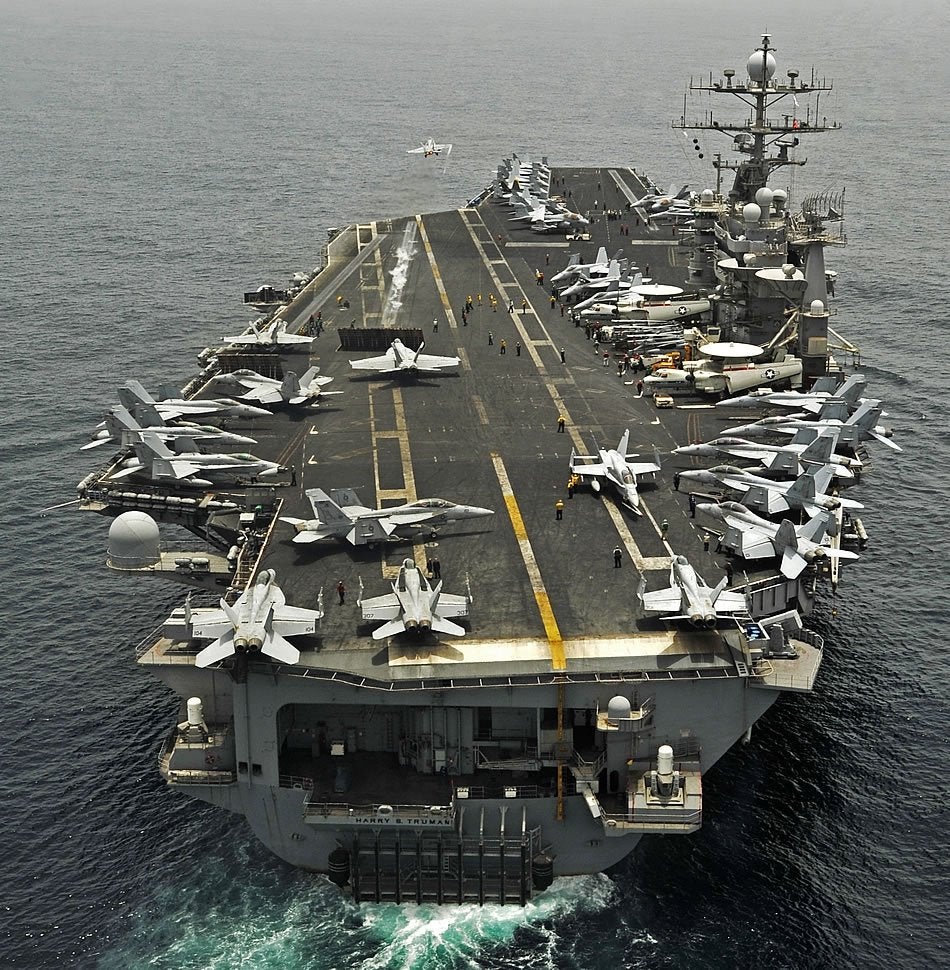
There’s two types there: F-18s and E-2 s . The EA- 6s are gone, except for the Marines’. The Hoovers are gone. The CODs will be gone by 2024. I know i t streamlines supplies and generally makes things easier paring down the menagerie , but it’s rather plain seeing so little variation.
 ttyymmnn
> user314
ttyymmnn
> user314
10/30/2018 at 14:11 |
|
Yeah, I made a post a month or so ago about that . Might even have been the same photo. A ll that commonality makes things easier for the Navy, but it sure makes things more boring for us. And I’m going to miss the C-2. It remains to be seen if the Osprey will be able to match it in COD.
 facw
> user314
facw
> user314
10/30/2018 at 15:07 |
|
Things are going to get a little more diverse going forward, with the addition of the Osprey (I assume there will be some overlap where both the C-2 and Osprey are in service), the F-35, and the MQ-25. It wouldn’t shock me if they end up with some other drones in the no to distant future as well.
 f86sabre
> ttyymmnn
f86sabre
> ttyymmnn
10/30/2018 at 17:55 |
|
Navy Sabre!
 ttyymmnn
> f86sabre
ttyymmnn
> f86sabre
10/30/2018 at 17:58 |
|
:D